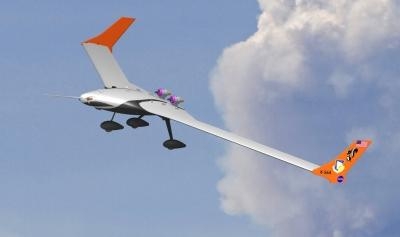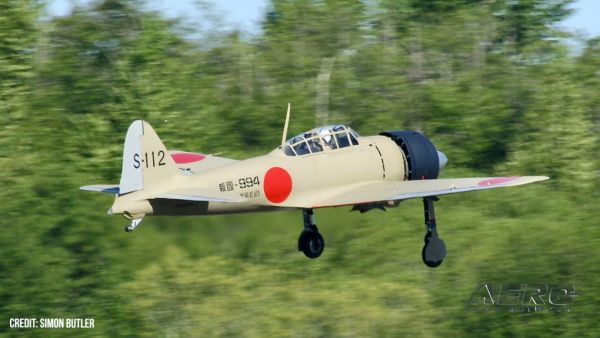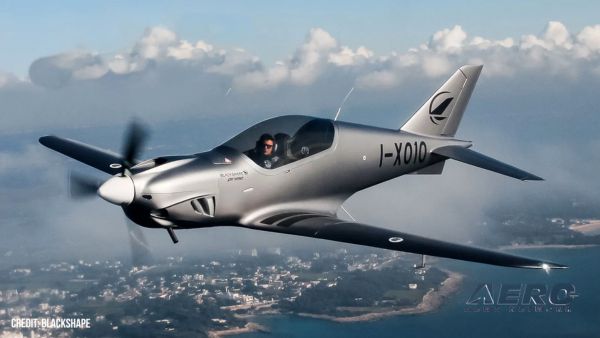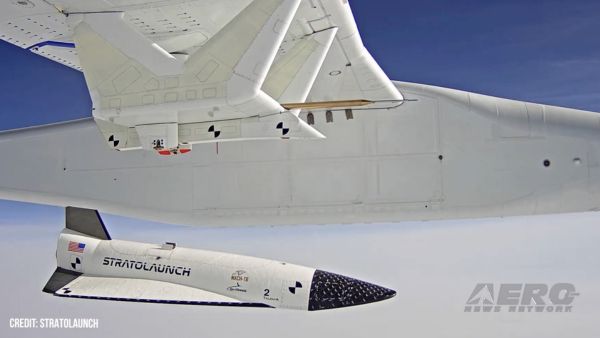Mon, Mar 05, 2012
UAV Will Be Used In Aircraft Configuration Research
The Air Force Research Laboratory was recently awarded an
X-Plane designation for a vehicle that will be used to explore
active control of lightweight, aerodynamically-efficient aircraft
configurations. The X-56A is an innovative, modular, unmanned fight
research vehicle that will allow investigation of active flutter
suppression and gust load alleviation technology.

Flutter is an instability that can occur when unsteady
aerodynamic loads acting on a wing couple with its natural
vibration modes, often resulting in catastrophic failures. The
research to be conducted with the X-56A is critical for the
successful development of future slender, lightweight, high aspect
ratio wing designs that could be used by energy efficient transport
and unmanned aircraft.
The X-56A, also known as the Multi-Utility Technology Testbed
(MUTT) flight demonstrator, is a product of the AFRL-led
Multi-Utility Aeroelastic Demonstration (MAD) program. This program
is a joint effort between AFRL's Air Vehicles Directorate, NASA
Dryden and Lockheed Martin.
The X-56A is powered by twin JetCat P240 turbojets, has a
28-foot wing span, weighs 480 pounds, and is designed and
constructed for easy wing replacement to enable testing of various
flexible wing configurations. An additional hard point is being
designed into the center of aft upper deck of the fuselage for
mounting an additional third engine or a structural member to
support testing of joined wing configurations. These
characteristics will allow the testing of a wide range of advanced
aerodynamic concepts. The X-56A will exhibit multiple rigid body
and aeroelastic instabilities within its flight envelope, which
will be actively managed by its flight control system.
The first X-56A flight is scheduled for summer 2012. Following
Air Force flight testing, the X-56A will be used by NASA's Dryden
Flight Research Center for their continuing research into
lightweight structures and advanced technologies for future
low-emissions transport aircraft.
More News
Outboard Section Of The Right Wing And The Right Flap Separated In Flight And The Airplane Impacted A Farm Field Analysis: The pilot was approaching his destination airport under i>[...]
Final Approach Fix The fix from which the final approach (IFR) to an airport is executed and which identifies the beginning of the final approach segment. It is designated on Gover>[...]
"Our choice of when to respond, how to respond and on which targets to respond is a consideration that we make every time... Netanyahu also noted that anyone attacking Israel &ldqu>[...]
Estimated (EST) When used in NOTAMs “EST” is a contraction that is used by the issuing authority only when the condition is expected to return to service prior to the e>[...]
Aero Linx: Coalition of Airline Pilots Associations (CAPA) The Coalition of Airline Pilots Associations (CAPA) is the world’s largest pilot trade association representing ove>[...]
 NTSB Final Report: Cessna 177B
NTSB Final Report: Cessna 177B ANN's Daily Aero-Term (05.08.25): Final Approach Fix
ANN's Daily Aero-Term (05.08.25): Final Approach Fix Aero-News: Quote of the Day (05.08.25)
Aero-News: Quote of the Day (05.08.25) ANN's Daily Aero-Term (05.09.25): Estimated (EST)
ANN's Daily Aero-Term (05.09.25): Estimated (EST) ANN's Daily Aero-Linx (05.09.25)
ANN's Daily Aero-Linx (05.09.25)



